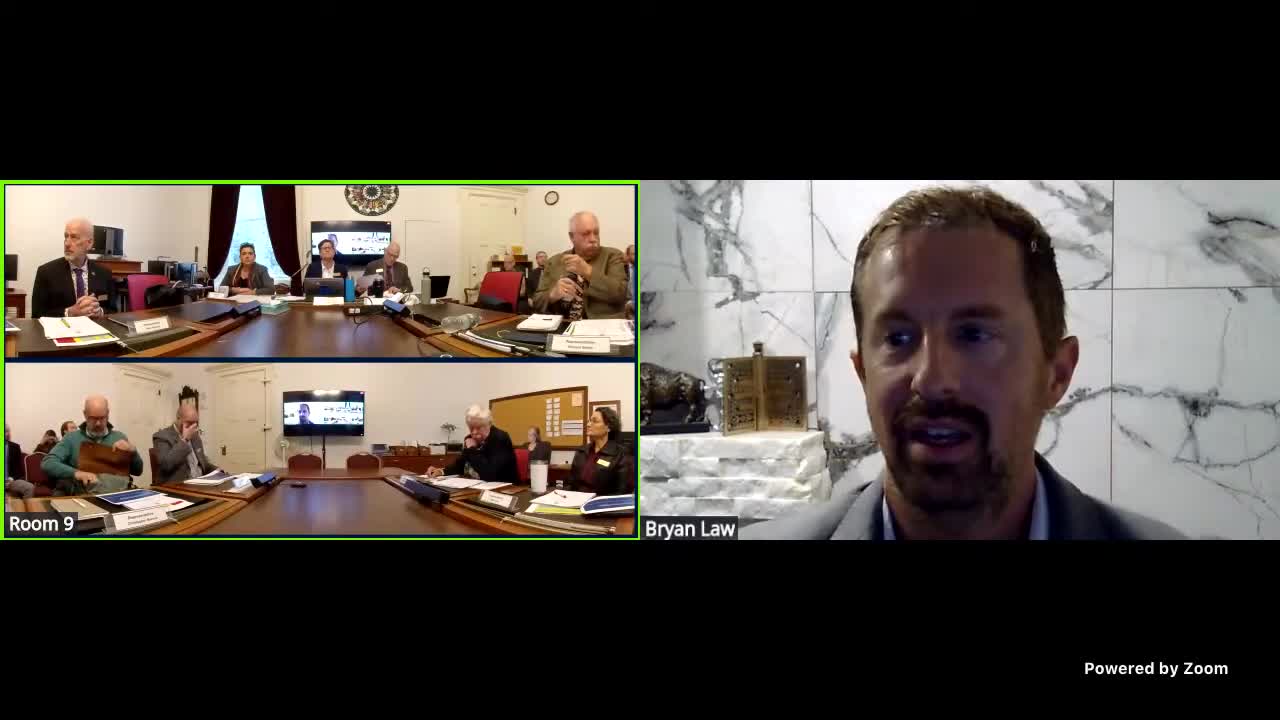Witnesses warn AI data centers could add major electricity demand and press states to set rules on cost allocation
October 31, 2025 | Environment & Energy, HOUSE OF REPRESENTATIVES, Committees, Legislative , Vermont
This article was created by AI summarizing key points discussed. AI makes mistakes, so for full details and context, please refer to the video of the full meeting. Please report any errors so we can fix them. Report an error »

Artificial‑intelligence data centers and other large new loads are reshaping state energy policy discussions because of their magnitude and speed of growth, witnesses told Vermont lawmakers on Oct. 30.
Brian Law, associate director for energy at the National Conference of State Legislatures, said states are tracking a rapid buildup of data centers across the country and urged lawmakers to consider how to regulate and allocate costs for very large electricity users. "Data centers currently make up, will could make up over 9% of electric electricity consumption in 2030. Currently, it's about 4.4%," Law said in testimony summarizing NCSL tracking.
Ethan Hinch of Sen. Bernie Sanders' office highlighted independent research that quantifies household‑level impacts if large loads are not charged for their systemwide costs. He cited work showing data‑center growth could increase residential electric bills nationally, and referenced studies estimating systemwide bill increases; for example, he told the committee that university research indicates data centers could raise electric bills on average by about 8% by 2030.
Witnesses described three policy levers states are using: 1) incentive or efficiency standards for data‑center equipment and cooling, 2) reporting or transparency requirements that tie energy use to planning and grid studies, and 3) rate‑class or tariff changes that require new large‑load customers to pay distribution and transmission cost shares tied to their peak usage. Law described examples where states or utilities create a distinct rate class for very large loads so those customers "pay their fair share." He also noted that data centers are not the only source of rising demand; automation in manufacturing and building electrification are also increasing load.
Committee members asked whether New England is a hot spot for data‑center siting; witnesses said the current hotspots are states such as Virginia, Pennsylvania and Texas, but cautioned that siting patterns can shift quickly. Shana Loisel of VELCO told the committee Vermont currently is not seeing major data‑center siting activity, but that any large new load would require close interconnection review, and could trigger regional planning responses.
Why it matters: data centers add sustained high demand, not short spikes, so their siting and the rate structure that applies to them can materially affect utility planning, transmission needs and residential rates. Law and Hinch urged that states use reporting, tariff design and siting review to avoid socializing large new costs to households.
Reporting notes: direct technical numbers and estimates are attributed to Brian Law (NCSL) and Ethan Hinch (Sen. Sanders office) as given in committee testimony; independent studies referenced in testimony (Lawrence Berkeley National Laboratory; Carnegie Mellon / North Carolina university research) were cited in‑panel and should be consulted directly for methodology and full results.
Brian Law, associate director for energy at the National Conference of State Legislatures, said states are tracking a rapid buildup of data centers across the country and urged lawmakers to consider how to regulate and allocate costs for very large electricity users. "Data centers currently make up, will could make up over 9% of electric electricity consumption in 2030. Currently, it's about 4.4%," Law said in testimony summarizing NCSL tracking.
Ethan Hinch of Sen. Bernie Sanders' office highlighted independent research that quantifies household‑level impacts if large loads are not charged for their systemwide costs. He cited work showing data‑center growth could increase residential electric bills nationally, and referenced studies estimating systemwide bill increases; for example, he told the committee that university research indicates data centers could raise electric bills on average by about 8% by 2030.
Witnesses described three policy levers states are using: 1) incentive or efficiency standards for data‑center equipment and cooling, 2) reporting or transparency requirements that tie energy use to planning and grid studies, and 3) rate‑class or tariff changes that require new large‑load customers to pay distribution and transmission cost shares tied to their peak usage. Law described examples where states or utilities create a distinct rate class for very large loads so those customers "pay their fair share." He also noted that data centers are not the only source of rising demand; automation in manufacturing and building electrification are also increasing load.
Committee members asked whether New England is a hot spot for data‑center siting; witnesses said the current hotspots are states such as Virginia, Pennsylvania and Texas, but cautioned that siting patterns can shift quickly. Shana Loisel of VELCO told the committee Vermont currently is not seeing major data‑center siting activity, but that any large new load would require close interconnection review, and could trigger regional planning responses.
Why it matters: data centers add sustained high demand, not short spikes, so their siting and the rate structure that applies to them can materially affect utility planning, transmission needs and residential rates. Law and Hinch urged that states use reporting, tariff design and siting review to avoid socializing large new costs to households.
Reporting notes: direct technical numbers and estimates are attributed to Brian Law (NCSL) and Ethan Hinch (Sen. Sanders office) as given in committee testimony; independent studies referenced in testimony (Lawrence Berkeley National Laboratory; Carnegie Mellon / North Carolina university research) were cited in‑panel and should be consulted directly for methodology and full results.
View full meeting
This article is based on a recent meeting—watch the full video and explore the complete transcript for deeper insights into the discussion.
View full meeting